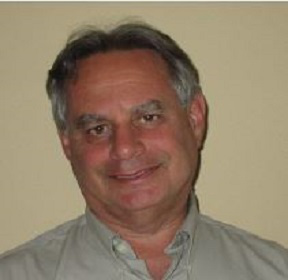Keynote Forum

Steven J Adelman
USATitle: Basis of Novel Therapeutic approaches for Cardiovascular Disease
Abstract:
Statement of the Problem: Cardiovascular Disease remains the major killer in the Western world despite the demonstrated benefits of lipid lowering therapies. Novel approaches are being investigated to address further therapeutic needs, currently with limited success. Processes leading to heart attacks include lipid deposition (i.e. cholesterol), lesion progression and recruitment of immune cells with their activation, subsequent plaque rupture and release of prothrombotic components. Ultimately, blockage of blood flow occurs. Of the pathways involved, two major mechanistic pathways have been under study: 1). elevation of HDL, by any means, to enhance cholesterol efflux and removal of cholesterol from the vascular wall to drive the process of reverse cholesterol transport (RCT). This is movement of cholesterol from cells of the atherosclerotic vasculature to HDL in the blood and subsequently to the liver for modification and excretion to the gut for elimination from the body, and 2). regulation of inflammatory pathways in attempts to inhibit vessel wall plaque degradation and rupture leading to heart attacks.
Epidemiologic studies have shown significant correlations of HDLc levels with reduced cardiovascular events. A number of methods for elevating HDL have been under study, among which a significant focus has been to inhibit the activity of cholesterol ester transfer protein (CETP). CETP is an enzyme that transfers cholesterol ester from HDL to LDL. Blocking this enzyme leads to elevations of HDL cholesterol and increases in HDL particle size. Though this approach has successfully enhanced cellular cholesterol efflux, the first step in RCT, numerous attempts in the clinic have failed to show benefit in reducing cardiovascular events. Recent findings have suggested that subsequent function of the HDL particles may be affected in a negative way, with activities of HDL modifying enzymes reduced as well as uptake by hepatic cells. Thus, although initially seemingly successful in enhancing efflux, cardiovascular events were not reduced. A number of additional / novel approaches to HDL modulation are now under study.
A second approach currently under investigation is regulation of clinical events through inhibition of inflammation in the vascular wall. With the initiation of atherosclerosis, lipid is deposited and immune cells including macrophages are recruited to the site. As lesions develop, cells become engorged with lipid, becoming foam cells, and through during these processes, become activated. Activation enhances cell recruitment and release of cytokines and expression of adhesion molecules. Proteolytic enzymes are also released, with breakdown of the intimal surface and of vulnerable regions of the lesion cap, resulting rupturing of the plaque. Pro-thrombotic contents of the vessel wall are then released, leading to blockage of the lumen of the vessel, and of blood flow. Inhibition of immune cell recruitment and activation are an important approach to therapeutic treatment of cardiovascular disease, with some success established, but significant improvements to the approaches needed. Innovative methods to effect this process will be discussed.
Conclusion: Several novel therapeutic approaches to treatment of cardiovascular disease are under study, but improvements to achieve therapeutic benefit will be required.
Biography:
Steven J. Adelman, Founder and CEO of Vascular Strategies LLC, and CSO, NanoPhagix LLC has more than 25 years’ experience in drug discovery and development. Previously led several initiatives at Wyeth Pharmaceuticals: Senior Director, Cardiovascular and Metabolic Disease Research and Senior Director, Atherosclerosis CV/Women’s Health. Activities included identifying and validating discovery and development programs (small molecules and biologics), advancing more than 10 compounds through IND into clinical development. Expertise includes atherosclerosis and CVD, inflammation, immune biology, and women’s health. Worked extensively on rapamycin (sirolimus, Rapamune) for transplant indications and subsequent incorporation on the Cypher-stent, first successful drug-eluting coronary stent. Honors and memberships include elected Fellow American Heart Association; Golden Heart Member, Council on Arteriosclerosis, Thrombosis and Vascular Biology, Basic Sciences Council, Functional Genomics and Translational Biology Interdisciplinary Working Group, AHA, and International Atherosclerosis Society. Authored more than 100 articles and abstracts and holds over 30 patents.

Ulrich Steinhoff
GermanyTitle: Improved Diagnosis and Treatment of visceral Leishmaniasis
Abstract:
Visceral Leishmaniasis (VL) is the second-largest parasitic killer in the world (after Malaria) caused by parasites of the Leishmania donovani complex, including L. donovani (East-Africa and India) and L. infantum (Europe, North Africa and India). VL, also known as kala-azar, is mostly fatal if left untreated and the disease is characterized by irregular fever, weight loss, enlargement of the spleen. Therefore, reliable diagnosis and subsequent treatment is vital for VL-patients. Kinesins are the dominant antigens in visceral leishmaniasis (VL), targeted by the patient´s immune response. However, their sequence and structure (number of repeats) vary between different Leishmania isolates. This explains why rapid diagnosis of VL is still unreliable as commercially available tests are mainly based on rK39 (L. infantum, Brazil) and rK16 (L. donovani, India). Our goal was to develop an improved, rapid diagnostic test-system suitable for all VL-endemic countries, including Africa, Brazil and India. Further, as VL infected dogs (CVL) are an important reservoir that enhance the spread of VL, we also tested our new candidate antigens for their potential to diagnose and differentiate between VL-infected and VL-vaccinated dogs. To select the kinesin antigen(s) for most specific and efficient VL diagnosis, we sequenced, cloned and expressed the kinesin of VL isolates from East-Africa, Brazil and India and determined the impact of isolate- and repeat-specific variations on their diagnostic capacity. Furthermore, we studied in-silico and in vitro the influence of the number of kinesin repeats on antigenicity and diagnostic performance and could show that the number of Kinesin-repeats has a bigger influence on diagnostic sensitivity and specificity than strain-specific sequence variations.The second part of our work is concerned with the treatment of VL-patients. Currently, VL treatment strategies differ in the endemic countries - but common to all therapeutic approaches are strong side effects and the occurrence of drug resistant Leishmania-species. Currently, it was shown that the group of Kinetoplastida parasites (Leishmania spp., Trypanosoma brucei and Trypanosoma cruzei) express proteasomes that differ from the host organisms with respect to the proteasomal beta 4 and 5 subunit. Accordingly, a new class of proteasome inhibitors (azabenzoxazole) was developed that selectively binds to the beta 4/5 subunit of Kinetoplastida, suggesting the proteasome as ideal drug target molecule for infections caused by the Kinetoplastida parasites. Currently we are testing the suitability of such an inhibitor in the various Leishmania parasites by analyzing the efficiency of proteasome inhibition -, the parasite viability and survival in host cells. Our current data show that this new class of inhibitors is a very promising drug candidate for the treatment of VL.
Biography:
Dr. Ulrich Steinhoff earned a Diploma and PhD from Max-Planck Institute for Immunobiology, he done PHD from University of Ulm, Postdoctoral Fellowship from University of Zurich. He obtained the position of Group leader and assistant director Max-Planck Institute for Infection Biology. He is the member of the Loewe Druid consortium: Drugs for neglected diseases and member of the DFG SPP-1656 Priority Program, Intestinal Microbiota. He is a professor at Philipps University of Marburg – Germany, He has published several research articles.

Maria Teresa Rosanova
ArgentinaTitle: OSTEOMYELITIS IN PEDIATRIC BURN PATIENTS in a pediatric burn unit from Argentina
Abstract:
Introduction: Osteomyelitis in burn patients is rare. Objective: To describe the clinical, microbiological and evolution characteristics of burned children with osteomyelitis hospitalized in a high complexity hospital.
Goal. To describe the clinical, microbiological and outcome of children diagnosed with osteomyelitis hospitalized in a tertiary Pediatric Burn Unit.
Methods: Retrospective and descriptive study carried out during the period from January 2007 to January 2017.
Results: Of a total of 600 burned children, 12 presented osteomyelitis (incidence of 2%). Eleven patients presented burns due to direct fire. The median age was 42.5 months (interquartile range -IQR- 27-118 months) and the burned area was 33.5% (IQR 18.5-58%). Osteomyelitis was diagnosed a median of 30 days post-burn. The most frequent locations were the upper extremities and the calvaria. Fever was the most common clinical manifestation. The most frequently isolated microorganisms in bone tissue were fungi in 9 patients. All presented compatible pathological anatomy. The median of treatment was 44.5 days (IQR 34.5-65.5 days). Six patients presented motor sequelae and 1 patient died
Biography:
Dr. Maria Teresa Rosanova holds the esteemed title of Pediatric Infectologist, with dual qualifications in MD-PhD. She obtained her Doctor of Medicine degree from the University of Buenos Aires. Presently, she serves as the Clinical Head of the Infectious Disease Service Hospital de Pediatría Juan P. Garrahan.
Speakers

Pooja Patel
USATitle: Pasteurella Multocida: A Case Report on the Presentation and Challenges of Cellulitis, Osteomyelitis and Myocarditis
Biography:
Pooja Patel completed her medical school in Mumbai, India and is currently pursuing her Internal Medicine residency at Larkin Community Hospital in South Miami, Florida. She is currently a PGY2 resident, who aspires to specialize in cardiology and critical care. She is from the Midwest, not fearing living in the oh-so-cold winters. Patel enjoys learning and improving her skills, in every aspect available. She believes ‘teaching others is the easy way to learning’. Patel also completed and received her Master’s in Biomedical Sciences. She has volunteered her time at a non-profit organization since 2017, at Waukesha Free Clinic in Waukesha, Wisconsin (former St. Joseph’s Medical Clinic), and still continues to do so whenever possible. Patel was awarded the Director’s Coin during her rotation at the VA Medical Center in Grand Junction, Colorado for the care provided to our veterans, and for volunteering to help the community in times of the COVID surge in the late 2021. As a physician, she prides herself on serving those who have served our country.

Juliana Soares
BrazilTitle: Challenges in Cardioncology: Aortic Dissection after Cancer Treatment with Angiogenesis Inhibitors
Abstract:
Statement of the Problem:
As the general life expectancy of the population has increased, we have noticed that patients have more and more common risk factors for developing cardiovascular disease and cancer. Furthermore, despite advances in cancer therapies, there are still a variety of cardiotoxic adverse effects of treatment. Vascular endothelial growth factor inhibitors (VEGFI), such as bevazizumab, are widely used in cancer treatments, with a good clinical response. However, although there are still gaps in the available data, bevazizumab has been associated with adverse effects such as hypertension and endothelial dysfunction, including acute aortic disease. Case Report: 76-year-old female patient with hypertension under control, aortic arch dilation of 4.8cm (stable for 2 years) and right colon adenocarcinoma metastatic to the lymph node and liver. Chemotherapy was started with oxaliplatin, folinic acid and 5-fluorouracil, associated with bevazizumab. After the sixth cycle, the patient developed a sudden episode of intense chest discomfort, sweating and dizziness. In the emergency room, the initial diagnostic hypothesis was acute coronary syndrome secondary to vasospasm caused by 5-fluoracil. On physical examination, a difference in blood pressure was detected in the upper limbs, and aortic dissection was hypothesized. Chest tomography confirmed the diagnosis of type A aortic dissection. She underwent emergency surgery to replace the ascending aorta with suspension of the aortic valve, total aortic arch replacement, brachiocephalic trunk reimplantation and left common carotid artery reimplantation with interposition. The procedure was uneventful. The patient was discharged after 26 days of hospitalization with no neurological or motor sequelae and a ventricular ejection fraction of 39%.
Conclusion & Significance:
Our report aims to draw attention to the need for cardiovascular monitoring and appropriate management of patients taking bevazizumab.
Biography:
Juliana Soares is a cardiologist with a postgraduate degree in cardiology and women's cardiology. Founder of the Cardioncology Service at the Federal University of São Paulo - Brazil. She was head of the medical assistance groups at Hospital Israelita Albert Einstein. Author of several book chapters. Awarded Outstanding Achievement in Cardiology in 2014 by the MD Anderson Cancer Center. Lecturer in postgraduate Cardiology at Hospital Israelita Albert Einstein.

Stephen Hsu
USATitle: Novel Formulations Containing EC16 for Future Antiviral and Virucidal Products
Abstract:
Background: Norovirus is the world-leading cause of acute gastroenteritis associated with severe symptoms and deaths. However, vaccines against norovirus are currently not available, and medications that specifically target human norovirus infection are still under development. Surface disinfectants with activity against norovirus often contain toxic chemicals such as chlorine-based compounds (e.g., hypochlorite/bleach, ammonium chloride), acids, hydrogen peroxide, or a combination of these chemicals. However, these chemicals are not suitable for hand hygiene products to help prevent norovirus outbreaks or certain healthcare associated infections. The current studies evaluated the virucidal and antiviral activities of epigallocatechin-3-gallate-palmitate (EC16), a compound derived from green tea polyphenols, against murine norovirus (MNV S99, a surrogate for human norovirus) and other microorganisms.
Method: Initially, formulation suitability tests were conducted to compare EGCG (epigallocatechin-3-gallate), EC16 and tea polyphenol-palmitate in alcohol solution and hand hygiene formulations. The virucidal activity of EC16 was then tested in hand sanitizer gel and hand sanitizer foam formulations using a TCID50 time-kill suspension assay. The hand sanitizer gel prototype was also tested according to the EN13727:2012 (S. aureus and P. aeruginosa), EN13624 (Candida albicans), and EN 14476:2019 (norovirus) protocols. The surface disinfectant spray prototype was tested against S. aureus, P. aeruginosa, and S. enterica according to the AOAC Official Method 961.02, and against feline calicivirus according to ASTM test method E1053-20. The prototypes were also tested against spores of Bacillus cereus and Clostridium sporogenes using time-kill suspension tests. The In vitro treatment and prevention tests were performed using a 1-hour incubation of EC16 or EGCG with RAW264.7 cells, either pre-infection or post-infection with MNV.
Results: Unlike EC16, both EGCG and tea polyphenol-palmitate showed auto-oxidation (color change) and precipitation in alcohol solution and hand hygiene formulations, and were thus less suitable for potential hand hygiene products or new drug development. The time-kill suspension test results demonstrated that EC16 in both sanitizer gel and foam formulations reduced MNV by >99.99% (>log10 4) after 60 sec direct contact. The hand sanitizer gel showed activities against S. aureus, P. aeruginosa, C. albicans, and murine norovirus with a >log10 7.4 reduction for bacteria, >log10 6.4 for the yeast, and >log10 5.5 for murine norovirus. The surface disinfectant spray tests passed EPA required standards with all species tested. The sporicidal activities of similar formulations showed >log10 5 reductions against two bacterial spores. Without alcohol, one-hour incubation of EC16 with RAW264.7 cells either before or after MNV infection (i.e., without direct contact with MNV), resulted in >99% (>log10 2) reduction of MNV infectivity.
Conclusion: EC16 is a candidate for use as a virucidal and antiviral compound to prevent and treat norovirus infection, with potential to be developed as a new drug against norovirus, pending in vivo and clinical tests.The hand sanitizer and surface disinfectant formulations containing EC16 have the potential to be further developed into novel hand hygiene and surface disinfectant products with bactericidal, fungicidal, virucidal, and sporicidal activities, pending additional studies and tests.
Biography:
Dr. Stephen Hsu earned a bachelor’s degree from Wuhan University, China, a Master of Arts degree from Montclair State University and a PhD. degree from the University of Cincinnati College of Medicine. He spent four years at Memorial Sloan-Kettering Cancer Center before a career change. During the four years as a sports anchor for ESPN International, Dr. Hsu taught at the National University of Singapore. Dr. Hsu joined Augusta University in 1999 and serves as Course Director for Nutrition and for Biochemistry. His research has been supported by the NIH and other agencies, with more than 80 research articles published

Lester Jay T Corsame
PhilippinesTitle: PREDICTORS OF TREATMENT OUTCOME AMONG DRUG RESISTANT TUBERCULOSIS PATIENT AT THE OUTPATIENT TB DOTS FACILITY OF ZAMBOANGA CITY MEDICAL CENTER
Abstract:
The Philippines is one of the high tuberculosis burden countries and drug- resistance is widespread in the country and abroad and threatens the success of TB program. Timely and efficient MDRTD treatment is crucial in preventing disease transmission and reducing the morbidity and mortality. Review of literature showed disparate predictors of treatment outcome and only prevalence studies are available in the Philippines. Hence, the findings of this study can be different among Filipinos. This study aims to determine the predictors of treatment outcomes among drug-resistant patients in outpatient setting at Zamboanga City Medical Center TB DOTS Center to enhance the TB program and its outcome.
This study is a retrospective cohort analytical design, which was conducted at the TB DOTS Center of Zamboanga City Medical Center. Using the data registry book from January 2015 to December 2019, patient’s demographic, and clinical characteristics were reviewed, collected, tabulated and analysis was done using binary regression to determine the predictors of treatment outcomes among drug-resistant tuberculosis patients. Of the 207 DR-TB patients, only 176 were included in the analysis, 120 (68.2%) had successful treatment outcome while 56 (31.8%) had poor treatment outcome. Age less than 40 years (p value= 0.038), absence of diabetes (p value= 0.079) and susceptible to isoniazid (p value= 0.025) and streptomycin (p values=0.012) were predictors of good outcome while none of the variables were predictors of mortality. The common drug resistance pattern were Rifampicin-resistant (56.8%), followed by MDR TB (36.4%).
The common characteristics of drug-resistant tuberculosis are male sex, age more than 40 years old, married, living in urban areas and with history of previous TB treatment. None of the variables were predictors of mortality however, age less than 40 years old, absence of diabetes, TB strains susceptible to isoniazid and streptomycin were predictors of good outcome.
Drug resistant, treatment outcomes, MDR-TB, treatment success, poor outcomes MESH WORDS
Biography:
Dr. Lester Jay Corsame finished his residency training in Internal Medicine at Zamboanga City Medical Center. He received his diplomate degree in 2022. Currently, he is under deployment program of the Department of Health to the rural areas.

